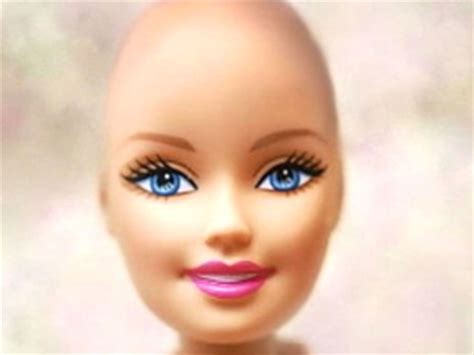A New Chapter in Inclusivity
The iconic Barbie doll, a symbol of femininity and glamour, has undergone a groundbreaking transformation with the introduction of the bald Barbie doll. This revolutionary move has sparked conversations about representation, inclusivity, and the unrealistic beauty standards that have long plagued the toy industry.

According to the American Cancer Society, over 1.8 million people in the United States are diagnosed with cancer annually, and many of them undergo chemotherapy, leading to hair loss. For many cancer patients, especially children, losing their hair can be a traumatic experience that can affect their self-esteem and body image.
The bald Barbie doll was created to address this issue. By normalizing baldness in the doll world, Mattel, Barbie’s parent company, aims to provide children with a relatable and empowering representation of those who have experienced hair loss. This move aligns with the company’s commitment to diversity and inclusivity, which has seen the expansion of the Barbie line to include dolls with various skin tones, body types, and disabilities.
Benefits of Bald Barbie Doll
The bald Barbie doll offers several benefits, including:
-
Improved Self-Esteem: The doll can help children with hair loss feel seen and valued by providing a tangible representation of their own experience. It can boost their confidence and reduce anxiety about their appearance.
-
Educational Tool: The doll can be used as an educational tool to start conversations about cancer, chemotherapy, and hair loss with children. It can help normalize these experiences and reduce the stigma associated with them.
-
Promoting Inclusivity: By including a bald Barbie doll in the toy line, Mattel sends a powerful message of inclusivity and acceptance. It shows children that beauty comes in all forms and that everyone deserves to be represented in the world they play in.
Common Criticism and Responses
While the bald Barbie doll has been widely praised for its inclusivity, it has also faced some criticism. Some argue that it is unrealistic for Barbie, a fashion icon, to be bald. Others worry that the doll could reinforce negative stereotypes about women with hair loss.
Mattel has responded to these criticisms by emphasizing the doll’s purpose as a representation of diversity and empowerment. The company states that the bald Barbie doll is not meant to replace the iconic blonde Barbie but rather to expand the possibilities for self-expression and representation.
Some may wonder if the bald Barbie doll will succeed in the long run. However, the growing demand for inclusive toys and the positive response from both children and parents suggest that this trend is here to stay. The bald Barbie doll serves as a reminder that beauty is not confined to traditional standards and that representation matters.
Strategies for Fostering Inclusivity
Here are some strategies for fostering inclusivity through toys:
-
Offer a Variety of Dolls: Toy companies should create doll lines that include characters with diverse physical characteristics, skin tones, and hair textures. This allows children to identify with and play with dolls that reflect their own identities.
-
Promote Positive Body Image: Toys should not perpetuate unrealistic or harmful body ideals. Instead, they should encourage children to appreciate and embrace their bodies as they are.
-
Encourage Imagination and Creativity: Toys that allow children to customize and create their own characters can foster imagination, self-expression, and acceptance of differences.
-
Engage with Children: Parents and educators can play a vital role in promoting inclusivity through toys by talking to children about diversity, respect, and the importance of embracing differences.
Conclusion
The bald Barbie doll is a bold and significant step forward in the toy industry. By embracing inclusivity and representation, Mattel has created a doll that empowers children with hair loss and sends a positive message about beauty and acceptance. As the demand for inclusive toys continues to grow, it is essential for toy companies and parents to embrace diversity and foster inclusivity in the playroom and beyond.
